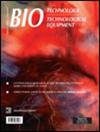碳量子点对晚疫病和真菌植物病原体的抑制活性及其对dsRNA诱导的基因沉默的影响
IF 1.4
4区 生物学
Q4 BIOTECHNOLOGY & APPLIED MICROBIOLOGY
引用次数: 1
摘要
碳量子点(CQDs)由于其细胞穿透能力、生物相容性和可调性而具有许多潜在的应用前景。在多种特性中,CQDs对细菌的抑制作用经常被报道。然而,对其他微生物的影响,如植物病原真菌和卵菌的研究很少。在CQDs存在的情况下,我们监测了卵霉菌植物病原体疫霉(Phytophthora infestans)以及另外三种植物真菌病原体Botrytis cinerea、Alternaria alternata和Fusarium oxysporum的生长情况。此外,我们还研究了CQDs改善P. infestans由外源dsRNA引起的基因沉默的能力,并评估了CQDs对人角质形成细胞的毒性。结果表明,CQDs在较低浓度下对病原菌有明显的抑制作用。以一种特定的方式,在较小程度上,三种真菌植物病原体的生长也受到影响。我们还发现,在体外用裸dsRNA处理病原菌不会引发基因沉默。然而,CQDs与dsRNA的混合物通过显著降低孢子囊发育过程中靶基因的转录水平,提高了RNAi效率。最后,在对植物病原体有活性的浓度下,没有发现CQDs的细胞毒性。本文章由计算机程序翻译,如有差异,请以英文原文为准。
Inhibitory activity of carbon quantum dots against Phytophthora infestans and fungal plant pathogens and their effect on dsRNA-induced gene silencing
Abstract Carbon quantum dots (CQDs) have many potential applications due to their cell-penetrating ability, biocompatibility and tunable properties. Among a variety of characteristics, the inhibition of bacteria by CQDs is often reported. However, the effect on other microorganisms, such as plant pathogenic fungi and oomycetes, is poorly studied. Here we monitored the growth of the oomycete plant pathogen Phytophthora infestans in the presence of CQDs, as well as of another three fungal plant pathogens, namely Botrytis cinerea, Alternaria alternata and Fusarium oxysporum. Moreover, the ability of CQDs to improve gene silencing caused by exogenous dsRNA in P. infestans was studied, and the toxicity of CQDs to human keratinocytes was evaluated. Our results indicate significant inhibitory activity of CQDs against P. infestans at relatively low concentrations. In a species-specific manner and to a lesser extent, the growth of the three fungal plant pathogens was also affected. We also found that the treatment of P. infestans with naked dsRNA in vitro did not trigger gene silencing. However, the mixture of CQDs with dsRNA increased RNAi efficiency, by causing a significant reduction of the transcript levels of the target gene in developing sporangia. Finally, no cytotoxicity of the CQDs, in the concentrations active against the plant pathogens, was found.
求助全文
通过发布文献求助,成功后即可免费获取论文全文。
去求助
来源期刊

Biotechnology & Biotechnological Equipment
工程技术-生物工程与应用微生物
CiteScore
3.10
自引率
0.00%
发文量
90
审稿时长
1 months
期刊介绍:
Biotechnology & Biotechnological Equipment (B&BE) is an international open access journal publishing cutting-edge research. A modern world requires modern biotechnology and nanobiology. The journal is a forum that provides society with valuable information for a healthy and better life and promotes “the Science and Culture of Nature”.
The journal publishes original research and reviews with a multidisciplinary perspective; expanded case reports with a focus on molecular medical research and advanced practice in evidence-based medicine are also considered.
 求助内容:
求助内容: 应助结果提醒方式:
应助结果提醒方式:


